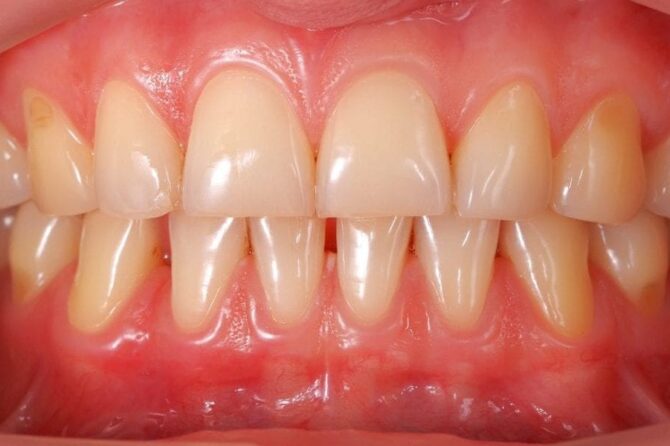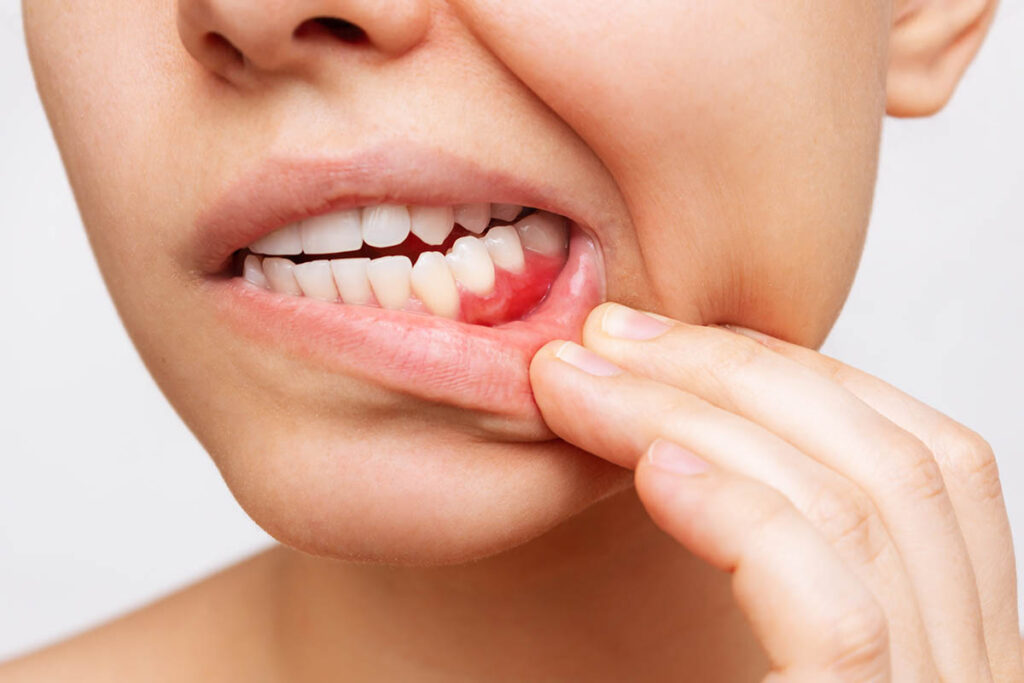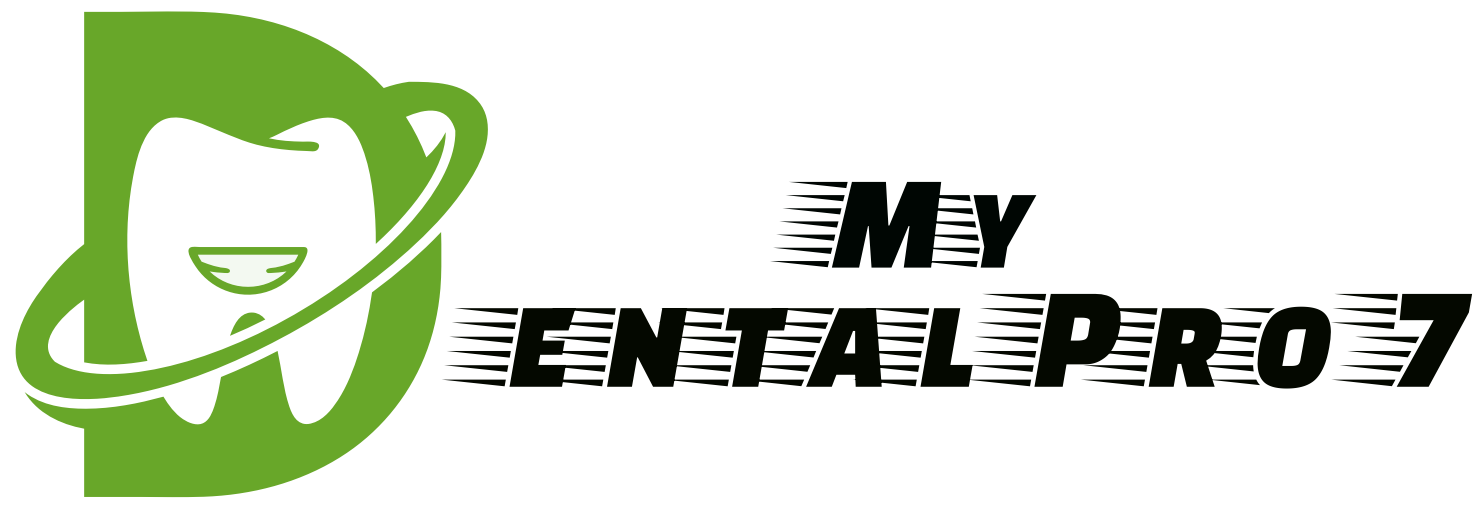
Best Toothpaste For Gum Recession: How to Prevent and Manage Receding Gums
Gum recession is a common problem that affects many people, and it’s important to address it as soon as possible in order to prevent the further deterioration of your gum health. Receding gums occur when the gums pull away from your teeth, exposing the root of the tooth and making it vulnerable to sensitivity and decay. If left untreated, receding gums can lead to periodontal (gum) disease and eventually tooth loss. Fortunately, there are steps you can take to prevent, treat, and even reverse the effects of receding gums. The most important step is to find the best toothpaste for gum recession that will work to reduce inflammation, strengthen your gums, and repair any damage that has been done. This guide is designed to provide you with the information you need to make an informed decision about which toothpaste is best for your particular needs. We’ll start off by discussing the causes of receding gums, then move on to how to identify it, what benefits toothpaste can have, tips on choosing the right toothpaste, and ultimately which toothpastes you should consider. We’ll also give some advice on how to maintain healthy gums so you can avoid having to deal with receding gums in the future. By the end of this guide, you’ll have all the knowledge you need to take proper care of your teeth and gums and make the right decision when it comes to choosing the best toothpaste for gum recession.
Causes of Receding Gums
Receding gums, or gum recession, is a common problem among adults and can lead to serious oral health issues when left untreated. While there are many causes of receding gums, two of the most prominent are genetics and poor oral hygiene.
Genetics
Gum recession can be caused by genetics due to certain predispositions for gum disease. If your family has a history of receding gums, then you may be more at risk of developing the condition yourself. Your dentist should be able to tell you whether you have any predisposition for gum disease.
Poor Oral Hygiene
Poor oral hygiene is one of the most common causes of receding gums. Brushing and flossing on a daily basis is essential for good oral health and to prevent receding gums. Not brushing and flossing thoroughly enough or not brushing and flossing regularly enough can cause an accumulation of plaque and bacteria which can lead to gum recession. Additionally, using products that are too abrasive on the teeth can wear away the enamel and lead to gum recession. Using an electric toothbrush is recommended over a manual one as they tend to be gentler on the gums and enamel.

Other Causes
There are other potential causes of receding gums such as smoking, poor nutrition, certain medications, grinding or clenching teeth and aging. It’s important to be aware of these causes and to try to avoid them as much as possible. By understanding the potential causes of receding gums, you can take steps to reduce your risk and protect your oral health. Make sure to discuss your concerns with your dentist and make sure you follow their advice for maintaining optimal oral health. Identifying gum recession can be a tricky task, but it’s important to catch it early and seek professional help when necessary. Gum recession is the process of the gums moving away from your teeth, exposing more of the tooth surface or root and making the teeth appear longer or larger. The condition can cause discomfort, sensitivity, and lead to further oral health problems if not properly treated. So, how do you know that you may have gum recession? Here are some signs to look out for:
- Gums appear to be receding: If your gums become inflamed and start to pull away from the teeth, this could indicate gum recession.
- Increased Tooth Sensitivity: Receded gums expose more of the tooth’s root, leading to increased sensitivity when exposed to cold, hot, acidic, or sweet food/drinks.
- Teeth appear longer: As the gums move down, more of the tooth’s surface is exposed and it looks longer than before.
- Loose Teeth: This is often one of the most severe symptoms of gum recession. If the gums have receded significantly, it can lead to the teeth becoming loose and weak due to weakened roots.
If you experience any of these symptoms, it’s important to visit your dentist as soon as possible. They will be able to diagnose the issue and provide advice on how to treat it. In most cases, gum recession can be reversed and the problem can be solved.
Benefits of Using Toothpaste for Gum Recession
Gum recession is a common problem affecting many people, especially those aging. The good news is there are some ingredients found in toothpastes that can help treat receding gums. It’s important to understand which ingredients are beneficial for gum recession, and why. This will help you choose the right toothpaste for your needs.
Sodium Lauryl Sulfate (SLS)
Sodium Lauryl Sulfate (SLS) is a foaming agent found in many toothpastes. It helps to remove plaque, bacteria and food particles from the teeth and gums. SLS also helps to reduce inflammation, which helps to combat Gum Disease, another factor in receding gums.
Fluoride
Fluoride has long been used to help maintain oral health and combat cavities. It acts as a remineralizing agent and helps protect your teeth and gums from damage caused by bacteria and other sources. Fluoride also helps keep your enamel strong, reducing the risk of gum recession.
Xylitol
Xylitol is a natural sweetener found in many toothpastes. It helps to fight bad breath, reduce decay and plaque build-up, and can even help keep your gums healthy. Xylitol helps to reduce the acidity in the mouth, helping to prevent gum disease.
Aloe Vera
Aloe vera is a natural anti-inflammatory agent which can be effective in soothing swollen, irritated and bleeding gums. It encourages the growth of new tissue and can help to repair receding gums.
Essential Oils
Many models of toothpaste now contain natural essential oils such as tea tree and peppermint oil. These oils help to reduce inflammation and promote the healing of gum tissue. Essential oils also give a pleasant flavor, making it easier to enjoy brushing your teeth. Choosing the right toothpaste with the right mix of ingredients is important for gum health. While these ingredients may not reverse gum recession, they can help to lessen the severity and slow down the rate of receding gums.
Tips for Choosing the Right Toothpaste for Gum Recession
When choosing the best toothpaste for gum recession, it’s important to consider the ingredients. You will want to look for toothpastes that contain fluoride and Sodium Lauryl Sulfate (SLS). These two ingredients have been shown to have beneficial effects on receding gums.
Fluoride can help reduce plaque and inflammation in the gums. It also strengthens teeth, which can prevent future recession. Sodium Lauryl Sulfate (SLS) is a surfactant that helps to remove food particles and bacteria that can cause gum disease.
You should also look for toothpastes that are specifically designed for people with sensitive gums. These toothpastes typically contain additional ingredients such as aloe vera, chamomile, and tea tree oil which can help soothe and calm irritated gums.
Finally, avoid toothpastes that contain abrasives such as baking soda, as this can irritate your gums and make the problem worse. Instead, look for toothpastes with natural ingredients like xylitol or sea salt, which can help keep your gums healthy.
When it comes to choosing the best toothpaste for receding gums, there are a few things you should know. It’s important to make sure your toothpaste has certain ingredients that are beneficial for treating and preventing gum recession. In this section, we will provide a thorough comparison of the most popular toothpastes available and which one we recommend is best for receding gums. Below are some of the key ingredients to look for when selecting a toothpaste for gum recession:
- Fluoride – Fluoride has been proven to fight cavities, which can often lead to the beginnings of gum recession. It helps strengthen enamel, making your teeth less susceptible to cavities.
- Triclosan – This prescription-strength antibacterial agent helps reduce bacteria in the mouth. It kills bacteria that cause plaque build-up, which can then lead to gum recession.
- SLS (Sodium Lauryl Sulfate) – This is an ingredient found in many toothpastes. It helps keep the toothpaste from becoming too thick by breaking down fat molecules that help form plaque. It also helps loosen debris from your teeth, making them easier to clean.
- Xylitol – Xylitol is a natural sweetener found in many foods and drinks. Studies have shown it can help reduce plaque buildup and even inhibit the growth of certain types of bacteria that cause gum disease.
Now let’s look at some of the popular toothpastes available and which one we feel is best for receding gums:
- Crest Pro-Health Advanced – This toothpaste contains fluoride and triclosan to help prevent and treat cavities and gingivitis. It also contains xylitol to help reduce plaque buildup and protect against gum recession.
- Colgate Total – This toothpaste contains fluoride, triclosan, and SLS to help fight cavities and gingivitis. It also contains allantoin, which helps soothe inflamed gums and reduce pain.
- Tom’s of Maine Natural – This toothpaste contains all-natural ingredients, such as baking soda, essential oils, and xylitol. It is free of dyes, artificial flavors, and chemicals that can be irritating to sensitive gums.
- CocoWhite – This toothpaste contains fluoride, SLS, and coconut oil, which helps whiten teeth over time. It also contains xylitol to help fight bacteria and reduce plaque buildup.
We feel that Crest Pro-Health Advanced is the best toothpaste for receding gums. It contains the necessary ingredients to help fight cavities and reduce plaque buildup. Plus, it’s very affordable, so it’s perfect for those on a budget. When it comes to choosing the best toothpaste for your receding gums, it’s important to read labels carefully and consider the pros and cons of each product. With the right toothpaste, you can help prevent gum recession and promote healthy gums.
Do’s and Don’ts for Healthy Gums
Having healthy gums can be the difference between having a perfect smile or having one marred by gum recession. While some people may have a genetic predisposition to gum disease, most cases of receding gums are caused by poor oral hygiene habits. As such, it is important to know what to do in order to ensure your gums remain healthy and do not recede.
Do’s
- Brush with a soft-bristled toothbrush that is specifically marketed as being good for gum health.
- Floss daily to remove plaque and food debris from the hard to reach places that a toothbrush cannot reach.
- Use an antiseptic mouthwash to help kill bacteria that cause gum disease.
- See a dentist at least twice a year for a checkup and cleaning so that any problems with your gums can be identified early.
- Eat a healthy diet that is rich in vitamins and minerals that are beneficial for your gums. A balanced diet can help to boost your immune system and fight off infection-causing bacteria in the mouth.
- If you have receding gums, use a toothpaste specifically formulated for those with gum recession.
Don’ts
- Don’t consume sugary drinks and foods too often as they can cause tooth decay and subsequent gum disease.
- Don’t brush too hard as this can wear down your enamel and cause receding gums.
- Don’t forget to floss regularly as food particles can accumulate between teeth and cause infection.
- Don’t ignore your dentist’s advice when they tell you to brush and floss more often.
- Don’t smoke as it increases your risk of developing gum disease.
By following these simple tips, you can ensure that your gums remain healthy and free from receding and other major issues. If you are experiencing any signs of gum recession, consult your dentist for advice on the best toothpaste to use, as well as how to properly care for your gums.
Gum recession is an important problem that needs to addressed. It can be caused by genetics or poor oral hygiene, and symptoms can include tooth sensitivity and visible gum tissue receding from the teeth. Knowing how to identify the signs of recession is key to getting proper treatment. One of the best treatments for receding gums is using toothpaste specifically designed to help with this issue. This can help reduce inflammation, help strengthen the gum tissue and fight the bacteria that cause gum disease. When choosing a toothpaste for receding gums, it is important to look for ingredients like fluoride and SLS, as these can help with treating the affected areas. When it comes to the best toothpaste for gum recession, there are several to choose from. Some popular options include Sensodyne ProNamel, Crest Gum Detoxify and Colgate Total Clean Mint. Each toothpaste contains its own unique blend of ingredients, so it is important to research and compare the different ones to find out which one best suits your needs. In addition to using the right toothpaste, there are several do’s and don’ts that can help keep your gums healthy: • Do brush your teeth twice a day, preferably with a soft-bristled toothbrush • Do floss daily to remove food debris and plaque • Don’t smoke as it can aggravate gum recession • Don’t use abrasive toothpastes • Don’t exceed the recommended amount of toothpaste when brushing In conclusion, gum recession is an important issue which needs to be addressed. Using the right toothpaste is essential for treating and preventing recession, so it is important to compare the different products on the market and choose the one that best suits your needs. By following healthy oral hygiene habits and using the right toothpaste, you can help ensure your gums remain healthy and strong!
Frequently Asked Questions About Best Toothpaste For Gum Recession
- Q: What is gum recession?
A: Gum recession is a condition where the gums pull away from the teeth, leaving the roots exposed. In addition to making your teeth or gums look longer, gum recession can cause tooth sensitivity, bad breath, and an increased risk of tooth loss. - Q: What causes receding gums?
A: Receding gums can be caused by several factors, including genetics, poor oral hygiene, aggressive brushing, overzealous flossing, and periodontal disease. - Q: How can you identify receding gums?
A: Some signs to look out for include tooth sensitivity, bad breath, and the appearance of lengthened teeth. If these symptoms persist, it’s best to consult a dentist for a proper diagnosis and treatment plan. - Q: What are the benefits of using toothpaste for receding gums?
A: Certain ingredients in toothpastes can help treat receding gums, such as fluoride and SLS. Fluoride helps to protect against cavities while SLS repairs damaged gum tissue. - Q: How do I choose the best toothpaste for gum recession?
A: When choosing the best toothpaste for gum recession, look for ingredients like fluoride and SLS, which will help to protect and repair your damaged gum tissue. - Q: What are the best toothpastes for receding gums?
A: Some of the best toothpastes for receding gums include Sensodyne Pronamel Gentle Whitening, SynBio Mommy & Baby Natural Organic Toothpaste, and Colgate Enamel Health Toothpaste. - Q: What are some tips for healthy gums?
A: Some tips for maintaining healthy gums include brushing your teeth twice a day for two minutes each time, flossing daily, visiting your dentist for cleanings every six months, and avoiding sugary or acidic drinks and food.
